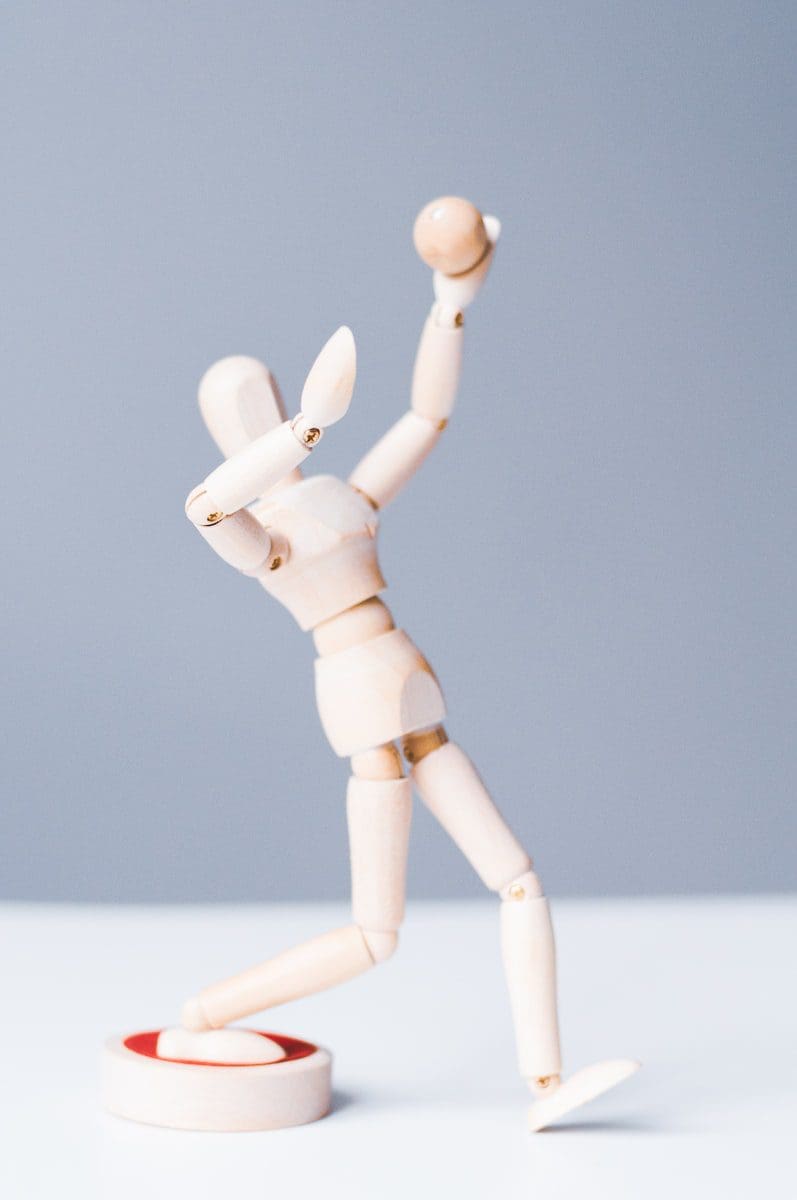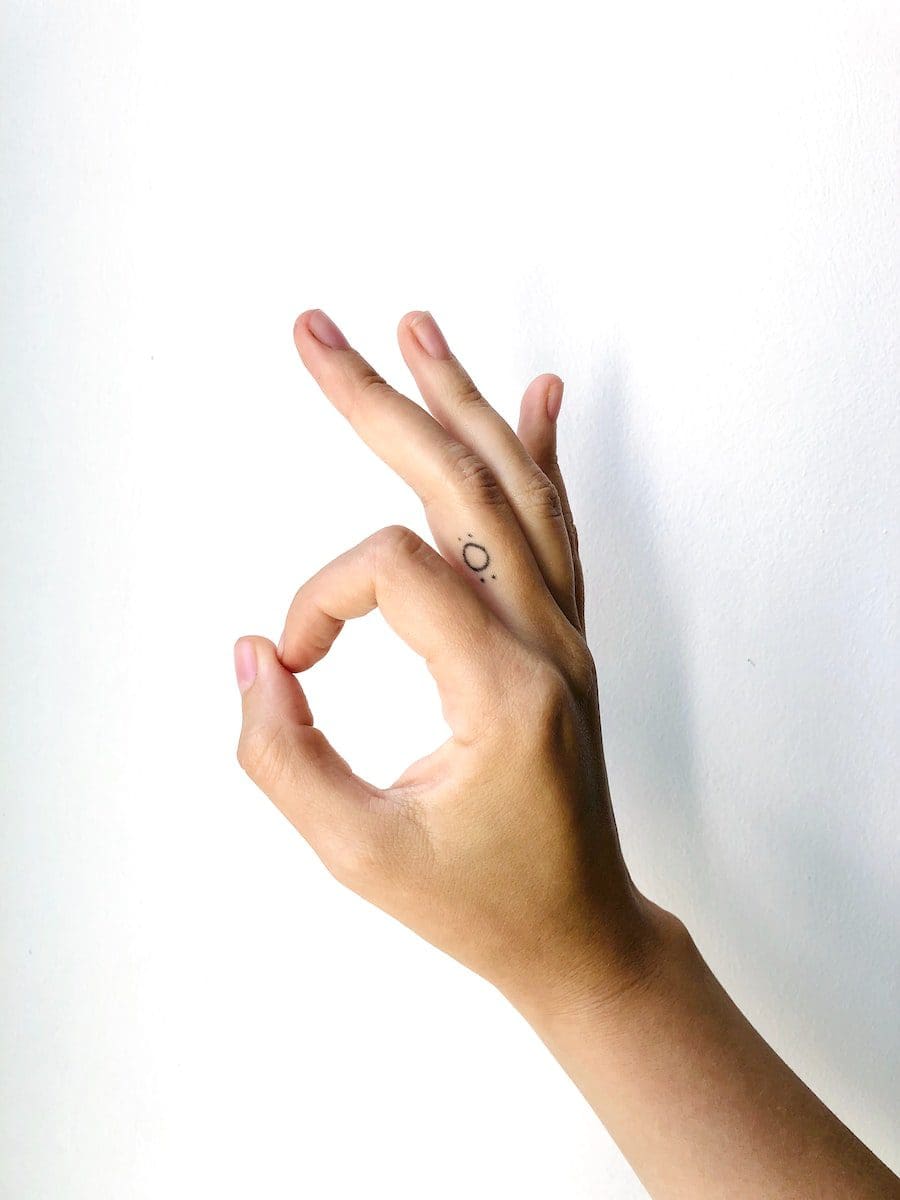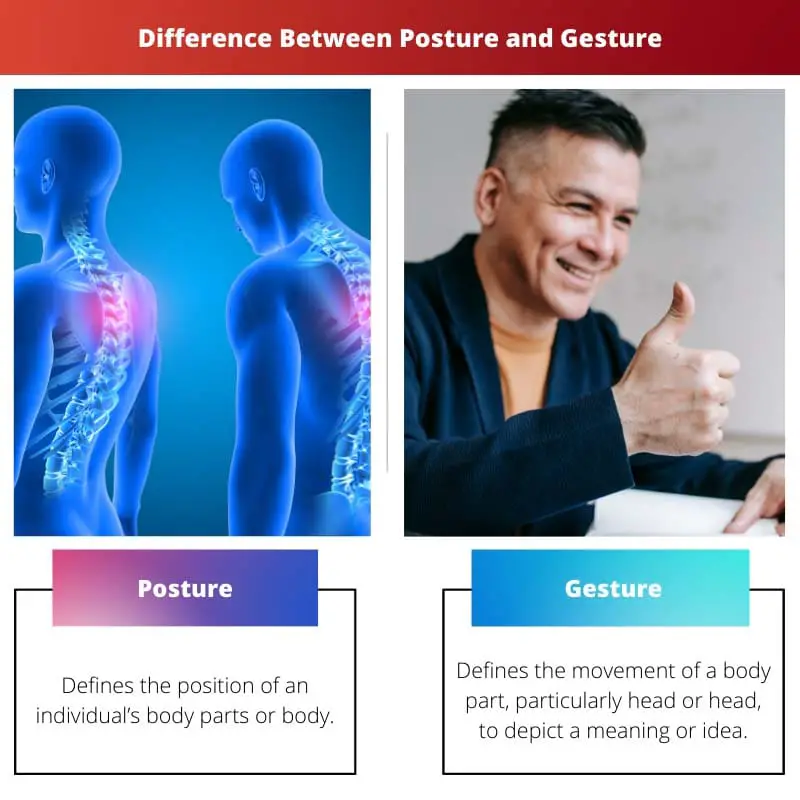Speech is a vital component of every nation and culture on this planet. Language is diverse, and the vibrations generated through it are the basis of lingos spoken in different parts of the world and groups of people.
With that, another vital aspect of communication is body language. It basically involves the posture and gesture of a person and can be seen as very particular according to the culture.
Key Takeaways
- Posture refers to the body’s position, while gesture refers to a movement or action made with the hands or body.
- Posture can convey confidence or insecurity, while gestures can convey emotions or ideas.
- Good posture is important for overall health and well-being, while gestures can enhance communication and social interactions.
Posture vs Gesture
The position of the body is defined as a posture. The whole body is involved in a posture. There are two main types of posture. One is made when a person is moving, and the other when a person is not moving. The movement of hands while talking is defined as a gesture. A gesture can be given through a single part of the body. A gesture can be intentional or unintentional.

Posture is for the way someone stands or sits. You may have a posture that might help people know whether you are angry, tense, or happy. It is the posture of a human being that helps in communicating using its body.
In fact, your body can adapt it in no time and unintentionally to give a clue to somebody regarding your feelings.
While a gesture takes the involvement of a person’s hand movements to show their sentences or words. For instance, saying hello or goodbyes to somebody are comprehensive gestures, and you might know in no time that the other person is trying to greet you using such signs.
Comparison Table
| Parameters of Comparison | Posture | Gesture |
|---|---|---|
| Definition | Defines the position of an individual’s body parts or body | Defines the movement of a body part, particularly head or head, to depict a meaning or idea |
| Body part involved | Involvement of entire body | Involvement of a single part of the body |
| Replacement of words | Don’t replace words | Can be utilized to replace words. |
| Emotions | Depicts attitude, confidence level, and mood | Depicts emotions and attitude |
| Nature | Mostly unintentional | Might be intentional or unintentional. |
What is Posture?
Posture is known as the outlook presumed by the body with muscular activity, support, or a coordinated action done by a few muscles to maintain body stability. It is basically of two types:
- Dynamic Posture: It is how you hold yourself while moving, like running or bending over to pick something up. It is needed to make an efficient base of the movement. Non-contractile structures and muscles are required to work, adapt or change circumstances.
- Static Posture: It is the way you hold yourself while you’re not moving, like when you’re sleeping, standing, or sitting. Body segments are maintained and aligned in firm positions. It is carried out via the interaction and coordination of many muscles working to counteract many forces and gravity.
The way to great posture is the placement of the spine. Correct posture must maintain the curves but not elevate them. Also, in a perfect posture, the gravity line must pass via particular points in your body.
You can merely evaluate or observe this by utilizing a plumb line to gauge the body’s midline. The line must then pass via the ear lobe, shoulder joint, hip joint, and then a bit anterior towards the midline of the knee joint and finally anterior towards the lateral malleolus.

What is Gesture?
When people speak, they gesture. It is a fundamental element of language that donates unique and meaningful details to a message spoken and returns the speaker’s underlying experiences and knowledge.
It serves a wide array of functions and overlaps with a speech regarding meaning and time. It also conveys information spatially, holistically, and simultaneously in one event.
With that, a gesture is specifically well-suited regarding visuospatial details that are left behind while having an overall conversation. The dignified learning of gestures in the conveyance is more discipline.
Gesture not only aids essential attributes to a note but also intently facilitates the cognitive establishment of messages. It also supports memory and learning.
If someone is making a “V” sign using his fingers, the gesture says that he is trying to show Victory. In other words, you can effortlessly recognize by such means what a person is trying to tell or speak about. A gesture is therefore known to figure out meanings out of someone’s body parts.
In different cultures, many unique signs or gestures illustrate special meanings and messages, like the mudras used in religions such as Buddhism, Hinduism, Jainism, etc.

Main Differences Between Posture and Gesture
- Posture is the way someone is sitting or standing. Oppositely, a gesture is the body movement of a person.
- Posture involves the illustration of attitudes like confidence or submissiveness. On the contrary, a gesture includes the depiction of specific meanings like goodbye and hello.
- A posture is mostly unintentional. It might be intentional but in a rare case. On the other hand, a gesture is intentional.
- A posture is a gauge in respect of the body’s centre. On the other hand, a gesture is a gauge regarding limbs and, more specifically, hands, head, face, or arms.
- Posture focuses on the fact that the torso of a person is in a grip or position. While in the case of gesture, the focus is on the person’s hand and finger movements.




